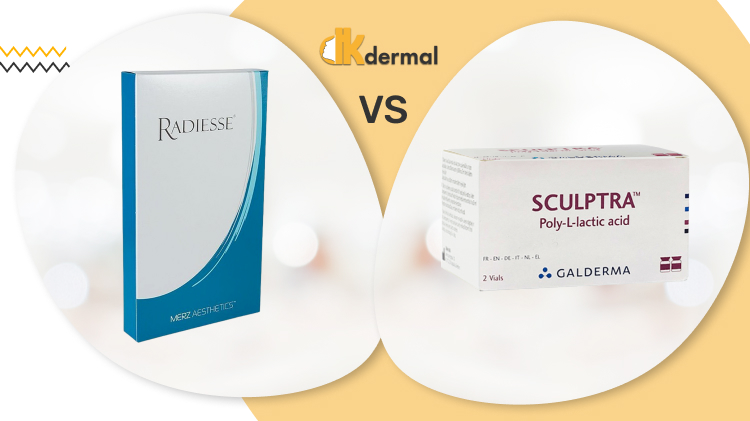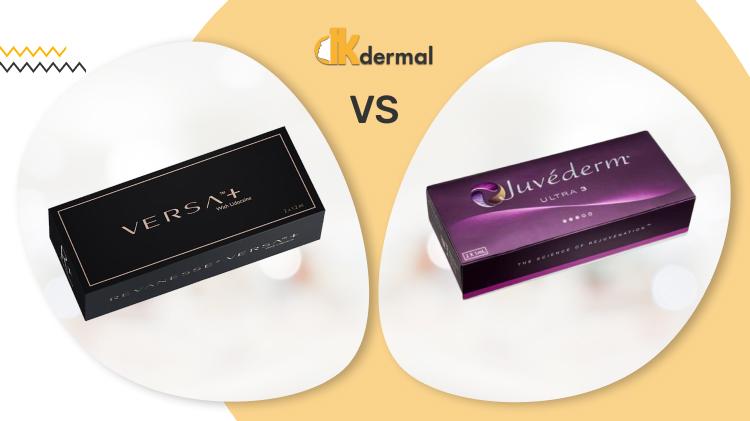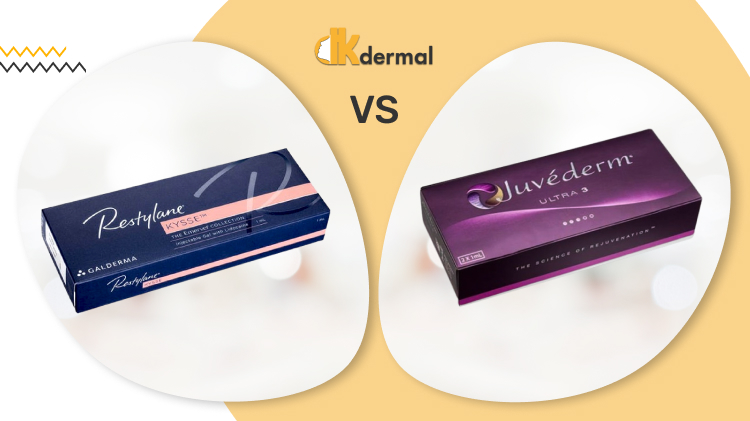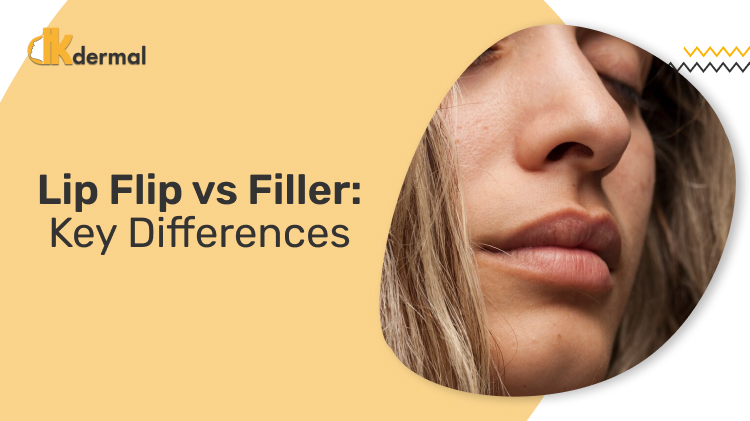When it comes to facial rejuvenation and addressing signs of facial aging, dermal fillers have become a popular choice. Among the many options available at the cosmetic dermatology clinics, Sculptra and Radiesse stand out as two of the most effective treatments for achieving a youthful appearance and boosting the skin tone.
But what exactly sets these two apart? In this blog post, we’ll dive into the key differences between Radiesse and Sculptra injections, helping you decide which one might be the best fit for your needs.
What Are Dermal Fillers?
Dermal fillers are injectable treatments designed to address volume loss, deep wrinkles, and skin sagging. They work by either adding immediate volume or stimulating the body’s natural collagen production to restore a more youthful look. Both Radiesse and Sculptra fall under the category of collagen bio-stimulators, meaning they encourage your body to produce collagen over time.
How Do Sculptra and Radiesse Work?
Both injectables are designed to address significant volume loss and severe facial wrinkles, but they achieve this in slightly different ways.
- Radiesse is composed of calcium microspheres (CaHA), a synthetic material that contains calcium particles. These particles provide instant volume while also boosting collagen production.
- Sculptra, on the other hand, is made from poly-L-lactic acid (PLLA), a biocompatible substance that works by triggering an inflammatory response in the skin. This response encourages the body to produce collagen gradually.
Stimulating Collagen Production: A Shared Benefit
One of the key similarities between Sculptra and Radiesse is their ability to boost collagen synthesis. Collagen is a vital skin firming protein that helps maintain skin elasticity and firmness.
As we age, our natural collagen levels decline, leading to sagging skin, deep folds, and loss of volume. Both fillers help combat these issues by promoting extended collagen production, resulting in a more youthful complexion.
Difference Between Radiesse and Sculptra: Interaction with Other Treatments
While both fillers aim to restore volume and boost collagen, their usage differs significantly:
- Radiesse: often used in combination with other dermal fillers or skin tightening treatments to enhance results. For example, it can be paired with hyaluronic acid fillers for a more comprehensive facial restoration approach.
- Sculptra: works well alongside treatments like microneedling or laser therapy, which can further boost production of collagen. However, it’s important to space out treatments to avoid overstimulating the skin.
Immediate Results vs. Gradual Improvement
If you’re looking for quick results, Radiesse might be the better choice. Its consistency allows it to fill in deep wrinkles, nasolabial folds, and marionette lines right after treatment. On the other hand, Sculptra requires multiple sessions and takes several weeks to show visible results, as it relies on your body’s natural collagen synthesis process.
Treatment Areas: Where Can They Be Used?
Both Radiesse and Sculptra can be used in the same facial areas, such as the cheeks, jawline, and temples. They are particularly effective for addressing sunken facial areas, smile lines, and skin depressions. However, Radiesse is often preferred for areas requiring instant volume, while Sculptra is ideal for those seeking long-term skin firming and restoring volume.
Injection Depth and Consistency
Another key difference lies in how these fillers are administered. Radiesse has a thicker consistency and is typically injected deeper into the skin. This makes it ideal for treating severe facial wrinkles and loss of volume. Sculptra, with its thinner consistency, is injected more superficially and is better suited for addressing thin skin and mild to moderate volume loss.
Discomfort and Downtime
Both treatments are minimally invasive and require minimal downtime. However, patients may experience mild swelling, redness, or bruising at the treatment area. Some report that Radiesse causes more discomfort due to its consistency, but this can be mitigated with a topical numbing cream. Sculptra is generally well-tolerated, with fewer side effects.
Longevity and Maintenance
When it comes to longevity, Radiesse results typically last between 12 and 18 months, while Sculptra can last up to 2 years or more. However, Sculptra often requires periodic maintenance treatments to achieve optimal results. Both fillers offer long-lasting benefits, but the choice depends on your desired timeline and commitment to maintenance.
Cost Considerations: Sculptra vs. Radiesse Price
The Radiesse and Sculptra cost can vary depending on the provider and the amount of product needed. Typically, Sculptra may require more sessions, which can increase the overall cost. However, its longer-lasting results may make it a more cost-effective option in the long run.
Environmental and Lifestyle Factors
Both Radiesse and Sculptra are suitable for individuals experiencing facial aging and sagging skin. However, Radiesse is frequently recommended for those seeking instant volume and quick results, while Sculptra is ideal for patients looking for gradual, long-term improvements.
Potential Side Effects
As with any injectable filler, both Radiesse and Sculptra come with potential side effects. While these treatments are generally safe as the lactic acid is a synthetic material, and it is not recognized as a foreign body, it’s important to be aware of the possible reactions and how to manage them. Here’s a breakdown of what you might experience:
- Swelling at the injection site, which usually subsides within a few days.
- Redness or tenderness in the treatment area.
- Bruising, especially if you have sensitive skin or are prone to bruising easily.
- Itching or a sensation of tightness in the treated area.
How to Minimize Risks
- Choose an experienced provider who is skilled in administering most dermal fillers.
- Follow all pre- and post-treatment instructions, such as avoiding blood-thinning medications before the procedure and massaging the treated area (if recommended).
- Communicate openly with your provider about your medical history, including any allergies, immune system or previous reactions to injectables.
While side effects are often mild and temporary, understanding what to expect can help you feel more confident about your decision. If you experience any unusual or persistent symptoms, contact your provider immediately.
Sculptra vs. Radiesse: Which One Should You Choose?
Choosing between Radiesse vs. Sculptra ultimately depends on your specific needs and goals. If you’re looking for quick results and a quick fix for any wrinkles or loss of volume, Radiesse might be the better option. However, if you prefer a more gradual approach with long-lasting results, Sculptra could be the ideal choice.
Both fillers are highly effective in restoring volume, boosting collagen, and addressing signs of aging. Consult with a qualified cosmetic dermatologist to determine which treatment aligns best with your pre-treatment state and desired outcomes.
Whether you pick Radiesse or Sculptra, both offer incredible benefits for achieving a youthful look and boosting your confidence. With the right treatment plan, you can enjoy smoother, firmer skin and a rejuvenated look that lasts.





